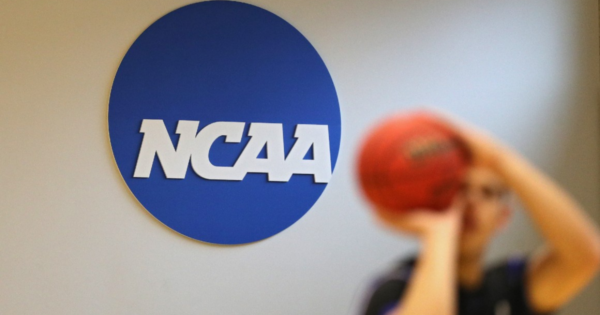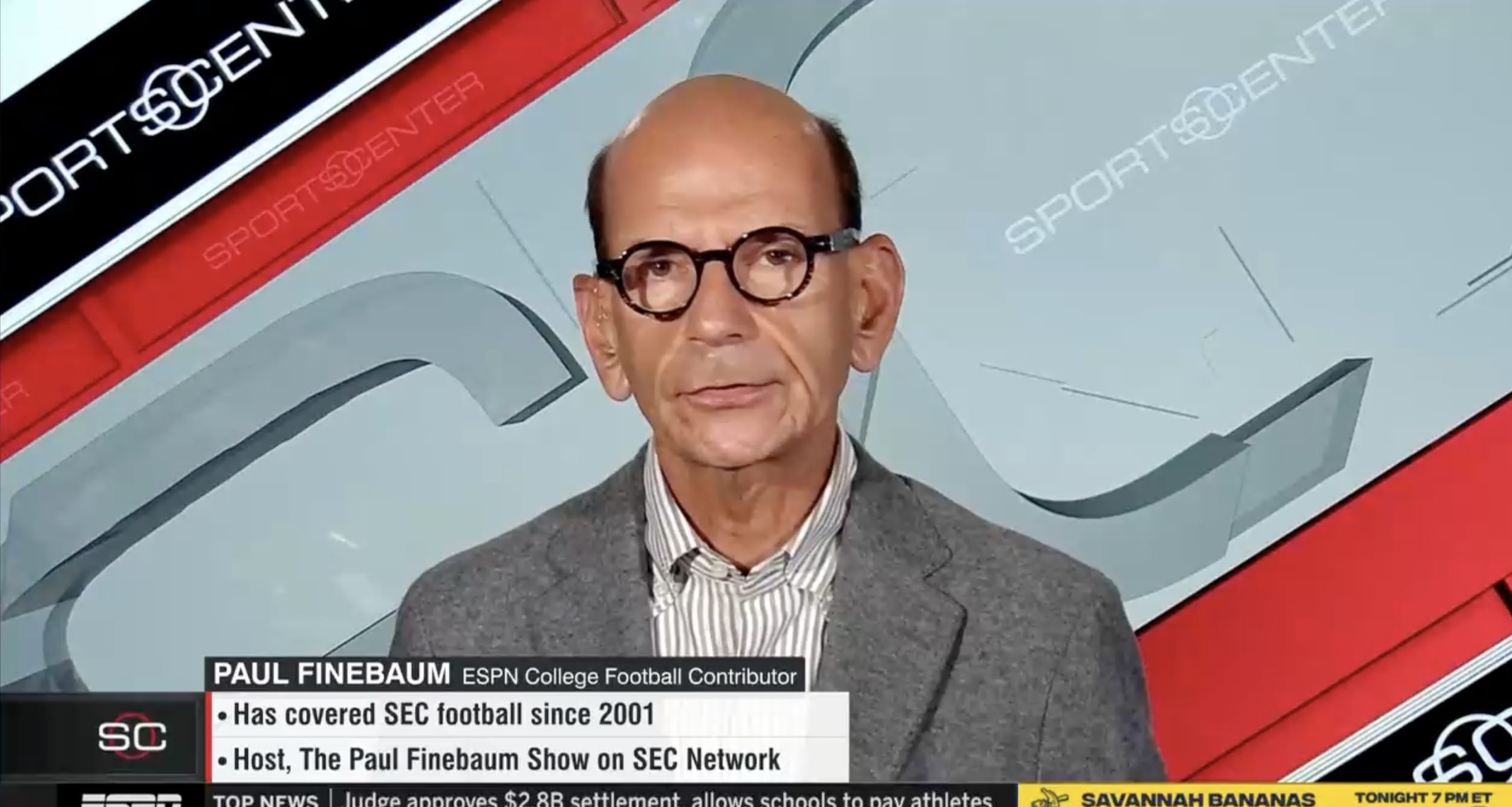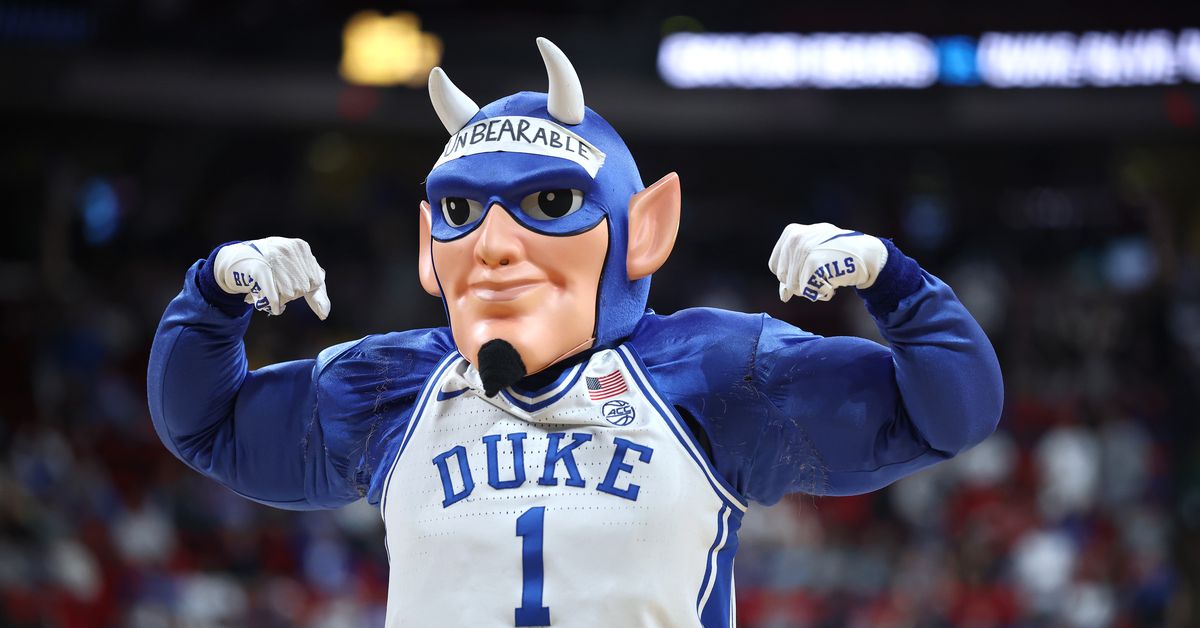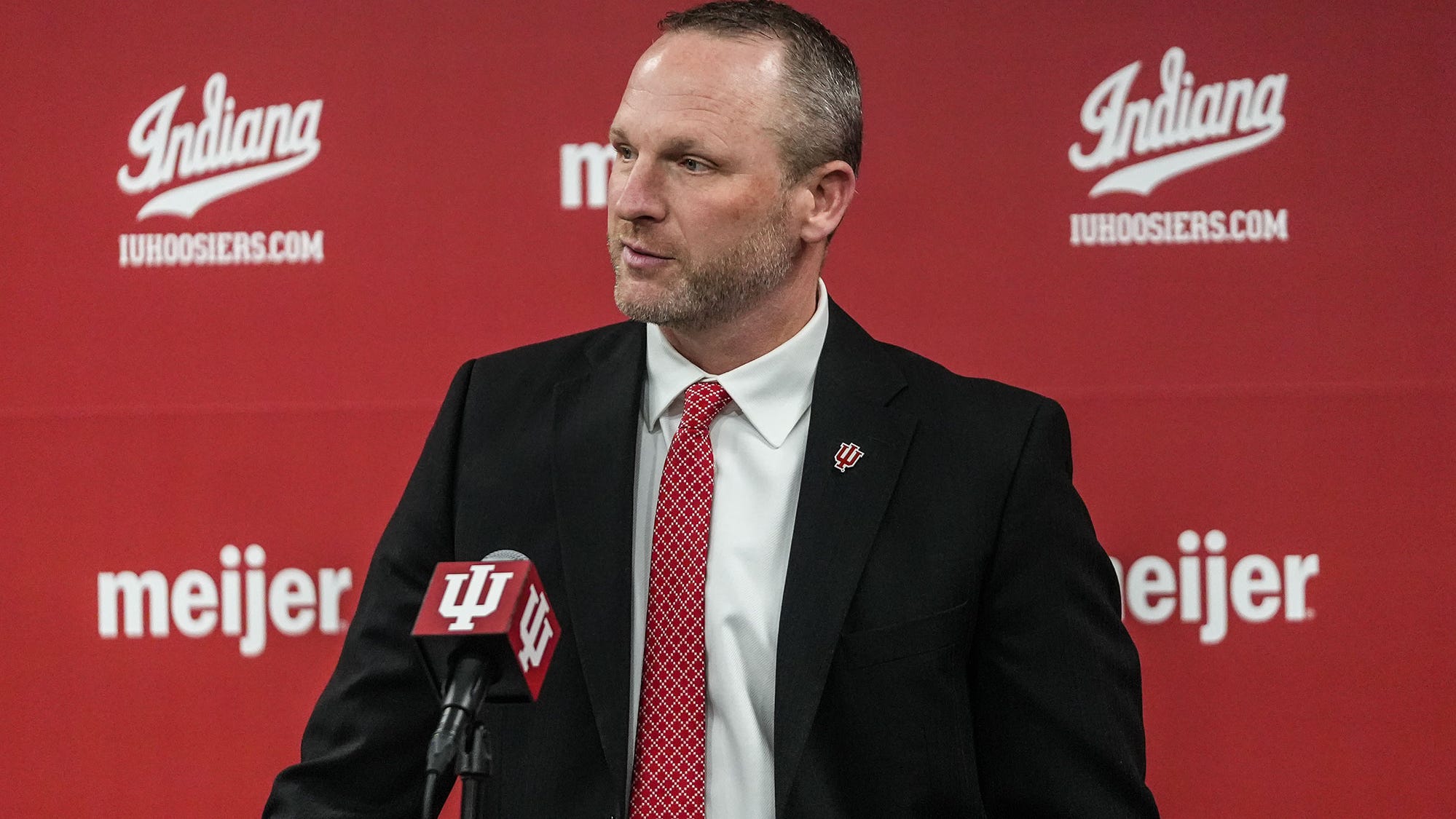NIL
NCAA Rules Committee proposes rule changes including coach challenges, shot continuation
The NCAA Men’s Basketball Rules Committee has proposed major rule changes that are expected to improve the “flow” of play ahead of the 2025-26 season, according to a NCAA release Friday afternoon. Chief among those recommendations is the addition of a single coach’s challenge at any point in the game “to review out-of-bounds calls, basket […]

The NCAA Men’s Basketball Rules Committee has proposed major rule changes that are expected to improve the “flow” of play ahead of the 2025-26 season, according to a NCAA release Friday afternoon.
Chief among those recommendations is the addition of a single coach’s challenge at any point in the game “to review out-of-bounds calls, basket interference/goaltending and whether a secondary defender was in the restricted-area arc,” the release stated. Committee members also recommended changes to the rule regarding continuous motion on field goal attempts.
The rules committee also recommended the creation of a joint working group to gather feedback from conferences on potentially moving from halves to quarters, though any potential changes to the game’s format won’t come until the next rules change year. The NCAA Playing Rules Oversight Panel must approve all rule proposals, with the panel scheduled to discuss these recommendations June 10.
The committee also proposed an elevated emphasis for officials to address delay-of-game tactics, limiting time at the monitor on reviews, and improving game administration efficiency while also reducing physicality.
“The committee focused on the flow of the game, especially the increased number of stoppages at the end of the game, this past season,” Karl Hicks, committee chair and associate commissioner for basketball at the American Athletic Conference, said in the release. “After soliciting input from the Division I Men’s Basketball Oversight Committee, Division I Men’s Basketball Competition Committee and the National Association of Basketball Coaches council, prioritizing the game flow at the end of the game was particularly important for our committee.
“Coach’s challenges were deemed to be the most efficient way to accomplish this goal. Data from the NCAA tournament and membership conferences showed a substantial number of reviews were on out-of-bounds plays. The committee looked at other basketball leagues around the world to see what the best solution would be for the NCAA, and the committee agreed with the NBA coach’s challenge system and its one plus one process.”
Regarding the proposed coach’s challenge, much like in college football, teams must have a timeout to request an instant replay review. If the challenge review is successful, teams will be granted an additional video review challenge for the remainder of the game, including overtime. If unsuccessful, the team loses the ability to challenge any other calls in the game.
Coach challenges will not impact an officials’ use of instant replay for timing mistakes, scoring errors, shot clock violations, 2-point vs. 3-point field goal attempts, flagrant fouls, etc.
Among other proposals submitted Friday:
- Officials have the option to call a Flagrant 1 foul when a player is hit in the groin area. Currently officials can only call it a common foul or a Flagrant 2, resulting in an ejection.
- A player could be called for basket interference if they use the rim to gain an advantage.
- Should one of the two shot clocks at either end of the court become inoperable, the other shot clock could be utilized. Currently, both clocks are turned off if one is inoperable.
NIL
College sports landscape changed forever with the House vs. NCAA settlement
Over the years, the transfer portal and NIL have completely changed the landscape of college sports. The portal has become the professional sports version of free agency, while NIL funds have varied from school to school, something Virginia Tech has found out over time. When it comes to rules and regulations surrounding NIL, fans have […]

Over the years, the transfer portal and NIL have completely changed the landscape of college sports. The portal has become the professional sports version of free agency, while NIL funds have varied from school to school, something Virginia Tech has found out over time.
When it comes to rules and regulations surrounding NIL, fans have been paying close attention and listening to what has been going on with the house settlement, which brings rules regarding NIL and also supplies revenue sharing. It has been taking some time for a ruling to officially come down, and that decision came down late Friday night.
Judge Claudia Wilken officially signed off on the final approval to the proposed settlement.
The case could officially and finally shape college sports forever, and rules regarding NIL, the transfer portal, and revenue sharing. This decision by Judge Wilken all but eliminates concerns going forward, and now it’s up to the schools to go to work.
“Despite some compromises, the settlement agreement nevertheless will result in extraordinary relief for members of the settlement classes,” Wilken wrote in her 76-page final opinion. “If approved, it would permit levels and types of student-athlete compensation that have never been permitted in the history of college sports, while also very generously compensating Division I student-athletes who suffered past harms.”
Athletes will be allowed to be paid by their schools, and each program will be granted just over $20 million to share with athletes across a number of sports. Schools agreed to grandfather the scholarship athletes, which allows athletes to remain and not risk losing their scholarships currently. The NCAA will also pay former athletes $277 million per year over the next 10 years to compensate them for damages.
This decision finally paints a picture of what things will look like going forward, which is what college athletes, coaches, and fans have been waiting for.
NIL
The NIL era just took a big step, and some Georgia fans aren’t celebrating
The recent announcement on the NCAA settlement paving the way for players to be directly paid by schools has been met with mixed emotions already. Obviously, players who are in line to get a share of the $2.8 billion coffers are quite happy. Georgia fans, however, are looking at it in a different light and […]

The recent announcement on the NCAA settlement paving the way for players to be directly paid by schools has been met with mixed emotions already. Obviously, players who are in line to get a share of the $2.8 billion coffers are quite happy.
Georgia fans, however, are looking at it in a different light and see this as potentially damaging recruiting and roster building, putting unfair shackles on schools who have traditionally led the pack.
Beyond the settlement for former players dating back to 2016, current players can now be paid directly by the school, however there will be a cap on the amount allowed. That could mean that stacking a huge recruiting class of five and four-star players could be a thing of the past.
Some Georgia fans let their feelings be known.
Other fans voiced concern with this new model, calling it “unsustainable”, “damaging to recruiting”, and “forced parity”.
The feelings that this will damage Georgia’s recruiting are probably valid, but Kirby Smart has also been a master at navigating changes in the landscape of college football. His recruiting approach to building relationships, selling being on a winning team over being a big fish in a little pond, and NFL development will need to be adjusted for sure.
While this new system won’t mean the end of titles in Athens, it may bring an end to any one team dominating the sport for an extended period of time. In other words, RIP college football dynasties.
NIL
College athletics as we know it is over
Judge Claudia Wilken announced the approval of the House v. NCAA settlement Friday in the U.S. Northern District of California. It’s a landmark decision that’s likely to usher in a revenue-sharing era among college sports, effectively allowing schools to pay their athletes. The ruling also created a clearinghouse for third-party NIL deals, which will have a say over […]

Judge Claudia Wilken announced the approval of the House v. NCAA settlement Friday in the U.S. Northern District of California. It’s a landmark decision that’s likely to usher in a revenue-sharing era among college sports, effectively allowing schools to pay their athletes.
The ruling also created a clearinghouse for third-party NIL deals, which will have a say over NIL arrangements of $600 or more.
“Despite some compromises, the settlement agreement nevertheless will result in extraordinary relief for members of the settlement classes,” Wilken wrote in her 76-page opinion. “If approved, it would permit levels and types of student-athlete compensation that have never been permitted in the history of college sports, while also very generously compensating Division I student-athletes who suffered past harms.”
We still have a long way to go before we fully understand the impact on college sports, especially football. One person who is not optimistic is ESPN and SEC Network host Paul Finebaum.
“I couldn’t help but think back about 10 years ago, when Mark Emmert, then the President of the NCAA, essentially said college athletes will be paid over my dead body. He’s still alive, but the NCAA is dead,” Finebaum said during an appearance on SportsCenter. “It may still be in existence. We’re still having tournaments, such as the Women’s World Series and the Men’s Baseball Tournament, but the NCAA, as we know it, is gone. They literally have no jurisdiction whatsoever other than to be tournament directors.
“This was supposed to level the playing field. Everybody pays the same into the kitty and then divides it up, but it will do anything but. The big will get bigger, and the small schools will simply slip away… Other than maybe in in basketball-only conferences that can use all that money for basketball, as opposed to, like, Alabama and Georgia and Ohio State, where they have to split up $20.5 million.”
Starting July 1, schools will be able to share $20.5 million with its athletes. Football is expected to receive 75%, followed by men’s basketball (15%), women’s basketball (5%) and all remaining sports (5%). Power Four football programs will have between $13 to $16 million to spend on rosters during the 2025 season under the settlement agreement.
Finebaum, known for his devotion to SEC football, views this situation as one that could jeopardize the momentum of women’s sports and non-revenue sports.
“The real casualty of all this, I believe, is going to be the one part of college athletics that has grown so much,” said Finebaum. “We watched the Women’s World Series last night, a million-dollar pitcher, by the way, for Texas Tech. Women’s sports, I think, are going to suffer from this. If you’re one of these Ohio States or Alabamas, and you’re dividing up $20.5 million, you know where most of it’s going, it’s going to football. That’s really a major casualty.
“College athletics did this to themselves. They’re not really suffering for it, because it’s a billion-dollar industry, but it’s going to be very uneven in the future. I think, at some point, fans are going to start tuning out. There’s such an existential threat to what we grew up loving, and we still do. It’s not going to be the same anymore.”
Finebaum is one of several prominent voices who see player compensation as the end of college athletics as we know it. Others might say that’s only fair considering the severe imbalance in profits generated by those institutions on the labors of those players.
College sports are indeed changing and getting more professional. However, they’ve been professional for a long time; the people in charge are only now being forced to acknowledge it.
NIL
We’d Love It If You Filled Out This DBR Podcast Survey And You Might Enjoy It Too
The DBR wants your help! We are partnering with our good friends on the Duke Basketball Roundup podcast for a fun summer activity. It is a Duke fan survey to gauge everything from how you became a Duke fan, to your favorite Duke player, to your feelings about NIL and the transfer portal, and much, […]

The DBR wants your help! We are partnering with our good friends on the Duke Basketball Roundup podcast for a fun summer activity. It is a Duke fan survey to gauge everything from how you became a Duke fan, to your favorite Duke player, to your feelings about NIL and the transfer portal, and much, much more.
It contains about 20 questions but shouldn’t take more than a few minutes to fill out. A word of advice — don’t ponder too much, go with your gut on each of these Qs.
The Duke Basketball Roundup will be revealing the answers on their podcast starting in a couple weeks and we will publish the results here too. This is a great way to talk about what we love about Duke and what maybe worries us too… And without you it won’t be complete.
So click here and tell us all about your relationship with Duke hoops!
NIL
IU basketball leans on vast NIL resources in rebuild amidst changed market
To build long-term stability, IU coach Darian DeVries wants to ‘simplify’ the process Indiana basketball coach Darian DeFries describes how he see building long-term stability. BLOOMINGTON — Indiana basketball coach Darian DeVries basically had to start from scratch when putting together his roster for the 2025-26 season. The lone holdover from Mike Woodson’s final year as […]


To build long-term stability, IU coach Darian DeVries wants to ‘simplify’ the process
Indiana basketball coach Darian DeFries describes how he see building long-term stability.
BLOOMINGTON — Indiana basketball coach Darian DeVries basically had to start from scratch when putting together his roster for the 2025-26 season.
The lone holdover from Mike Woodson’s final year as coach was a 2025 signee (Trent Sisley) who hadn’t even arrived on campus yet.
DeVries had plenty of experience with the process, having navigated similar rebuilds at Drake and West Virginia. Still, there was a noticeable difference this time around thanks to the House v. NCAA case that was finalized on Friday night.
The settlement in the case will usher in a new era of revenue sharing, along with an NIL clearinghouse that will vet deals. There was a rush to sign players to front-loaded NIL deals that weren’t subject to review before a final approval hearing back in April and that created a much different market than the one DeVries face during those previous rebuilds.
“I think the biggest thing, as everybody found out quickly, was the NIL piece jumped dramatically in terms of what rosters we’re going to take to kind of put together,” DeVries said at a recent booster event. “And thankfully, we’re at a place that was very supportive, and then have some great donors in place and people in place to help facilitate that.”
Those resources helped DeVries lock down 10 transfers, including three players (Tucker DeVries, Lamar Wilkerson and Reed Bailey) ranked in the top 100, per 247 Sports.
“We were able to adjust on the fly as we were putting together a roster,” DeVries said. “And then anytime you’re in the portal, those things can get a little tricky, as you’re trying to put that many guys on a roster at one time.”
It’s nothing new for Indiana — Woodson had a lucrative warchest after the 2023-24 season that helped him land some of the highest-rated players in the country. The school is also expected to be near the top of the conference in how much money from its anticipated $20.5 revenue-sharing budget it dedicates to men’s hoops.
“Just like last year, we’ll be highly competitive,” Indiana athletic director Scott Dolson said back in March. “Not just in our league, but nationally.”
That commitment came at a crucial time with IU facing stiff competition from teams across the country for top talent. Five other teams in the Big Ten (Iowa, Maryland, Minnesota, USC, and Washington) signed eight or more transfers.
Michael Niziolek is the Indiana beat reporter for The Bloomington Herald-Times. You can follow him on X @michaelniziolek and read all his coverage by clicking here.
NIL
Pete Thamel reveals which College Football Playoff format is ‘not going to happen’ after spring meetings
ESPN’s Pete Thamel got out in front of the College Football Playoff model that will not happen moving forward. Anything that has multiple autobids for certain conferences makes things a little more complicated for the average fan. That’s what Thamel reported and could infer about where the College Football Playoff expansion is going. While there […]

ESPN’s Pete Thamel got out in front of the College Football Playoff model that will not happen moving forward. Anything that has multiple autobids for certain conferences makes things a little more complicated for the average fan.
That’s what Thamel reported and could infer about where the College Football Playoff expansion is going. While there are rumblings of 14 or 16 teams, it’s likely going to be the latter.
Now how do you determine qualifiers? Well, keep it simple, stupid!
“The 4, 4, 2, 2-thing is not going to happen,” Thamel said on The College GameDay Podcast. “And certainly there’s some ways to go and things to figure out, especially the strength of schedule stuff … The point of the playoff expanding … College football is an unbelievable, regional sport that became national right around the BCS … For all its flaws, it did nationalize sport. So one of the challenges I’ve seen the sport have, trying to capture the I-95 sports fan, right? Boston, New York, Philly, you want to bring them in the same way you bring them in on the first Thursday of the NCAA tournament …
“You want to capture that casual fan, because you have the guy in Birmingham, you can’t get any more people to watch in Birmingham. And the idea of the 4, 4, 2, 2, 1, 3, if you’re sitting at the bar in Southie, trying to talk about Notre Dame’s playoff chances, it’s just like your head would explode, right?”
Good luck trying to figure that out if you’re a casual football fan. The College Football Playoff, as Thamel describes it, is trying to appeal to those from non-traditional college football areas. If you can make it look like the NFL, you might have a chance.
“It’s not Good Will Hunting calculus, but it’s just not intuitive to a sports fan,” Thamel said. “So basically, five plus 11 is like, we’re gonna take the conference champions and the rest of the best teams, which to me, is just a lot smoother if you’re trying to explain this …
“We get so in the weeds sometimes, and we talk about these terms and we socialize them … But I just think, as this transitions to five and 11, which it appears on the trajectory to do so and probably for ‘26 but not certain, I just think for the sport in general, a clearer idea of where it’s going makes sense.”
-

 College Sports3 weeks ago
College Sports3 weeks agoPortal Update – Basketball and Gymnastics Take Hits
-

 College Sports3 weeks ago
College Sports3 weeks agoPortal Update – Basketball and Gymnastics Take Hits
-

 Professional Sports3 weeks ago
Professional Sports3 weeks agoJon Jones answers UFC retirement speculation as fans accuse champion of 'holding the belt …
-

 Health3 weeks ago
Health3 weeks agoBYU women's basketball guard injures ACL twice
-

 NIL2 weeks ago
NIL2 weeks ago2025 NCAA Softball Tournament Bracket: Women’s College World Series bracket, schedule set
-

 Youtube3 weeks ago
Youtube3 weeks agoXavier Legette taught Marty Smith his signature celly
-

 High School Sports3 weeks ago
High School Sports3 weeks agoToday in the MHSAA
-

 College Sports3 weeks ago
College Sports3 weeks agoNCDC Commitment Profiles: Cyclones’ Martins Moving On to Saint Anselm College • USPHL
-

 College Sports3 weeks ago
College Sports3 weeks agoIU basketball recruiting
-

 Motorsports2 weeks ago
Motorsports2 weeks agoWhy IHOP Rode With Dale Earnhardt Jr. In Amazon NASCAR Debut


































